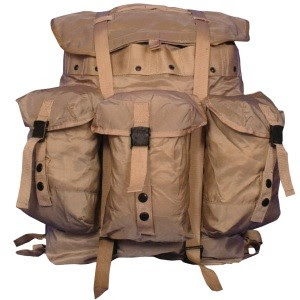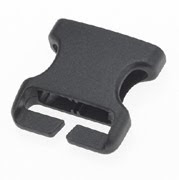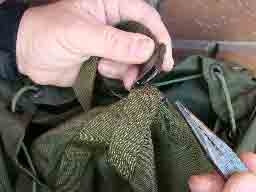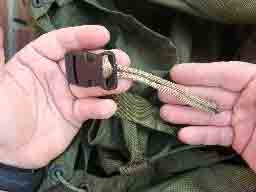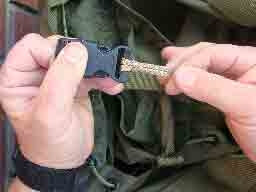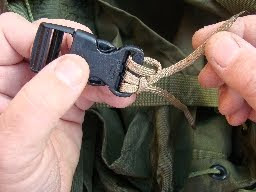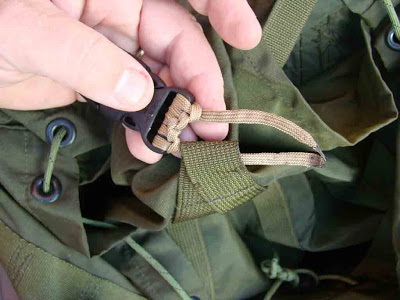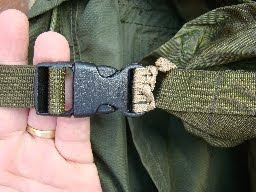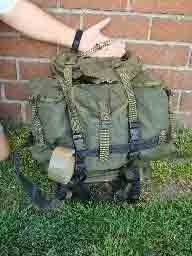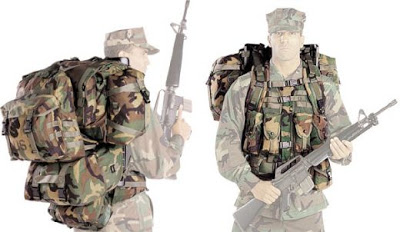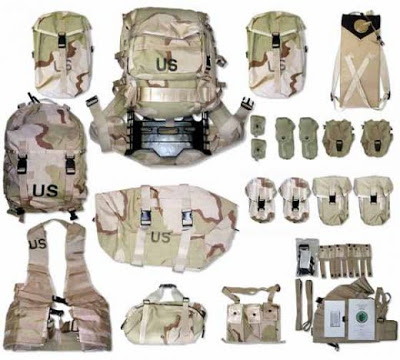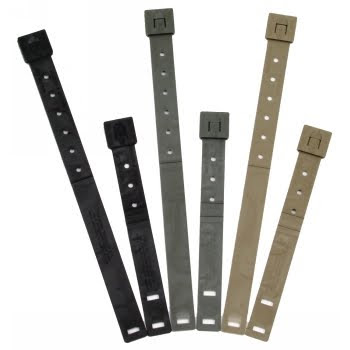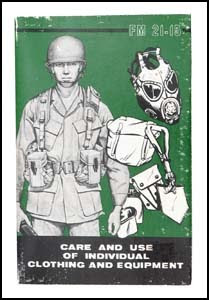Folks,
Back in the 90s, when we were first getting the constitutional militia movement together in this part of Alabama, we did a lot of talking about our own rules of engagement. There was a widespread perception among groups that an attack on one was an attack on all, but there were wrinkles and permutations that were troubling. For example, someone raised this question:
"What if the ATF/FBI pulled a Waco on a Klan group?"
Well, we rolled that one around for a bit and the consensus was that pinhead green-teethed racists had constitutional rights too, and so we would be compelled to come to their assistance. Finally, somebody offered: "Hey, I know. Why don't we just show up late and avenge their deaths?" We had a big laugh and moved on to the next topic. Fine joke. In theory. But the world is a real place full of obscure and difficult choices.
So when I read
the story below, I had to wonder, "is there a constitutional dog in this fight?" You've got the FBI versus a group of armed ex-cons. You know, one gang going after another gang.
My problem is I no longer believe a word the FBI says. I've had too much personal experience which persuades me that they routinely lie like dogs when it suits their purpose (a phrase which I always thought was a vicious slander on dogs for they are among God's most honest creatures).
Ideally such law-breakers (the Islamic radicals, not the FBI) would be handled by local or state law enforcement. (Well, OK, the premise of Absolved is that the Feds should be dealt with by state and local authorities as well. Like I said, at most levels, gang activity is recognizable regardless of the origin of the gang or the colors they fly. By their works ye shall know them.)
But that is not the world we live in, thanks to 75 years of federal encroachment on the constitutional rule of law.
I'd like more information on this case. Some of the rationales cited in the story by the Fibbies will be applied to me, when and if they decide that game is worth the candle:
"He regularly preaches anti-government and anti-law enforcement rhetoric . . . Abdullah and his followers have trained regularly in the use of firearms, and continue to train in martial arts and sword fighting."
Oh, my! So maybe they're training without firearms because they're ex-cons and are denied firearms. And maybe those who are training with firearms are the legit ones. Like I said, I no longer believe anything the FBI says.
On the face of it, these are Islamo-fascists who seek to set up sharia law in the US contrary to the Constitution. (When I read this story, I also thought of John Ringo's Detroit Imam in The Last Centurion.)
So, again, I wonder if there is a constitutional dog in this fight or if I should just put it down to an internecine fight between gangs.
What do you think?
Mike
III
Feds: Islamic Radical Killed in Mich. RaidBy ED WHITE ,
AP
DETROIT (Oct. 28) — A man described as a leader of a radical Sunni Islam group in the U.S. was fatally shot Wednesday afternoon while resisting arrest and exchanging gunfire with federal agents, authorities said.
Agents at a warehouse in Dearborn were trying to arrest Luqman Ameen Abdullah, 53, on charges that included conspiracy to sell stolen goods and illegal possession and sale of firearms. Ten followers listed in a criminal complaint were also being rounded up in the area.
Abdullah refused to surrender, fired a weapon and was killed by gunfire from agents, FBI spokeswoman Sandra Berchtold said.
In a court filing, the FBI said Abdullah, also known as Christopher Thomas, was an imam, or prayer leader, of a radical group named Ummah whose primary mission is to establish an Islamic state within the United States.
No one was charged with terrorism. But Abdullah was "advocating and encouraging his followers to commit violent acts against the United States," FBI agent Gary Leone said in an affidavit.
"He regularly preaches anti-government and anti-law enforcement rhetoric," Leone said. "Abdullah and his followers have trained regularly in the use of firearms, and continue to train in martial arts and sword fighting."
Leone said members of the national group mostly are black and some converted to Islam while in prisons across the United States.
"Abdullah preaches that every Muslim should have a weapon, and should not be scared to use their weapon when needed," Leone wrote.
It was not immediately clear how many of the other 10 suspects were in custody.
The group believes that a separate Islamic state in the U.S. would be controlled by Jamil Abdullah Al-Amin, formerly known as H. Rap Brown, who is serving a life sentence in a federal prison in Colorado for shooting two police officers in Georgia in 2000, Leone said. Al-Amin, a veteran of the black power movement, started the group after he converted to Islam in prison.
"They're not taking their cues from overseas," said Jimmy Jones, a professor of world religions at Manhattanville College and a longtime Muslim prison chaplain. "This group is very much American born and bred."
The movement at one time was believed to include a couple of dozen mosques around the country. Ummah is now dwarfed in numbers and influence by other African-American Muslim groups, particularly the mainstream Sunnis who were led by Imam W.D. Mohammed, who recently died.
By evening, authorities still were working the scene near the Detroit-Dearborn border and the warehouse was surrounded by police tape.
The U.S. attorney's office said an FBI dog was also killed during the shootout.
Abdullah's mosque is in a brick duplex on a quiet, residential street in Detroit. A sign on the door in English and Arabic reads, in part, "There is no God but Allah."
Several men congregated on the porch Wednesday night and subsequently attacked a photographer from The Detroit News who was taking pictures from across the street. Ricardo Thomas had his camera equipment smashed and had a bloody lip from the attack.
Imad Hamad, regional director of the American-Arab Anti-Discrimination Committee in Dearborn, said the FBI had briefed him about Wednesday's raids and told him they were the result of a two-year investigation.
"We know that this is not something to be projected as something against Muslims," Hamad said.


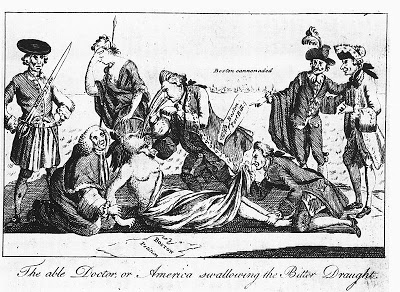
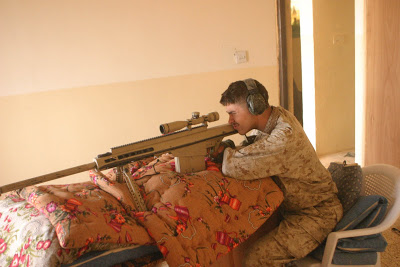
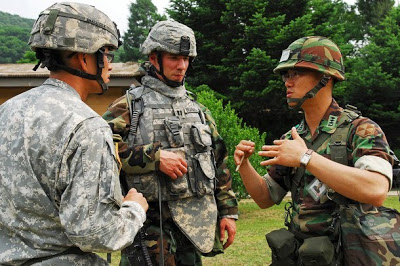
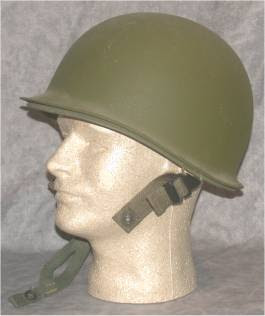

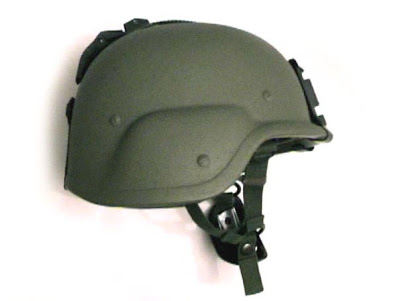
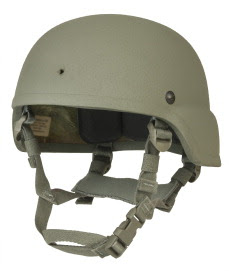
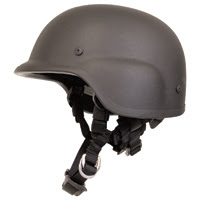



 "Et tu, Brute?"
"Et tu, Brute?"

